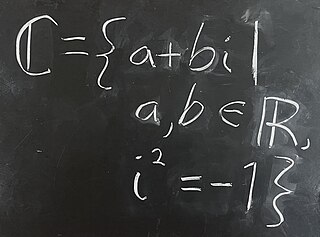The following table lists many specialized symbols commonly used in modern mathematics, ordered by their introduction date.
Contents
| Symbol | Name | Date of earliest use | First author to use |
|---|---|---|---|
— | horizontal bar for division | 14th century (approx.) | Nicole Oresme [1] |
+ | plus sign | 1360 (approx.), abbreviation for Latin et resembling the plus sign | Nicole Oresme |
− | minus sign | 1489 (first appearance of minus sign, and also first appearance of plus sign in print) | Johannes Widmann |
√ | radical symbol (for square root) | 1525 (without the vinculum above the radicand) | Christoff Rudolff |
(...) | parentheses (for precedence grouping) | 1544 (in handwritten notes) | Michael Stifel |
| 1556 | Niccolò Tartaglia | ||
= | equals sign | 1557 | Robert Recorde |
. | decimal separator | 1593 | Christopher Clavius |
× | multiplication sign | 1618 | William Oughtred |
± | plus–minus sign | 1628 | |
∷ | proportion sign | ||
n√ | radical symbol (for nth root) | 1629 | Albert Girard |
< > | strict inequality signs (less-than sign and greater-than sign) | 1631 | Thomas Harriot |
xy | superscript notation (for exponentiation) | 1636 (using Roman numerals as superscripts) | James Hume |
| 1637 (in the modern form) | René Descartes (La Géométrie) | ||
x | Use of the letter x for an independent variable or unknown value. See History of algebra: The symbol x. | 1637 [2] | René Descartes (La Géométrie) |
√ ̅ | radical symbol (for square root) | 1637 (with the vinculum above the radicand) | René Descartes (La Géométrie) |
% | percent sign | 1650 (approx.) | unknown |
∞ | infinity sign | 1655 | John Wallis |
÷ | division sign (a repurposed obelus variant) | 1659 | Johann Rahn |
≤ ≥ | unstrict inequality signs (less-than or equals to sign and greater-than or equals to sign) | 1670 (with the horizontal bar over the inequality sign, rather than below it) | John Wallis |
| 1734 (with double horizontal bar below the inequality sign) | Pierre Bouguer | ||
d | differential sign | 1675 | Gottfried Leibniz |
∫ | integral sign | ||
: | colon (for division) | 1684 (deriving from use of colon to denote fractions, dating back to 1633) | |
· | middle dot (for multiplication) | 1698 (perhaps deriving from a much earlier use of middle dot to separate juxtaposed numbers) | |
⁄ | division slash (a.k.a. solidus) | 1718 (deriving from horizontal fraction bar, invented by Abu Bakr al-Hassar in the 12th century) | Thomas Twining |
≠ | inequality sign (not equal to) | unknown | Leonhard Euler |
x′ | prime symbol (for derivative) | 1748 | |
Σ | summation symbol | 1755 | |
∝ | proportionality sign | 1768 | William Emerson |
∂ | partial differential sign (a.k.a. curly d or Jacobi's delta) | 1770 | Marquis de Condorcet |
≡ | identity sign (for congruence relation) | 1801 (first appearance in print; used previously in personal writings of Gauss) | Carl Friedrich Gauss |
[x] | integral part (a.k.a. floor) | 1808 | |
! | factorial | 1808 | Christian Kramp |
Π | product symbol | 1812 | Carl Friedrich Gauss |
⊂ ⊃ | set inclusion signs (subset of, superset of) | 1817 | Joseph Gergonne |
| 1890 | Ernst Schröder | ||
|...| | absolute value notation | 1841 | Karl Weierstrass |
| determinant of a matrix | 1841 | Arthur Cayley | |
‖...‖ | matrix notation | 1843 [3] | |
∇ | nabla symbol (for vector differential) | 1846 (previously used by Hamilton as a general-purpose operator sign) | William Rowan Hamilton |
∩ ∪ | intersection union | 1888 | Giuseppe Peano |
ℵ | aleph symbol (for transfinite cardinal numbers) | 1893 | Georg Cantor |
∈ | membership sign (is an element of) | 1894 | Giuseppe Peano |
O | Big O Notation | 1894 | Paul Bachmann |
{...} | braces, a.k.a. curly brackets (for set notation) | 1895 | Georg Cantor |
| Blackboard bold capital N (for natural numbers set) | 1895 | Giuseppe Peano | |
| Blackboard bold capital Q (for rational numbers set) | |||
∃ | existential quantifier (there exists) | 1897 | |
· | middle dot (for dot product) | 1902 | J. Willard Gibbs |
× | multiplication sign (for cross product) | ||
∨ | logical disjunction (a.k.a. OR) | 1906 | Bertrand Russell |
(...) | matrix notation | 1909 [3] | Maxime Bôcher |
[...] | 1909 [3] | Gerhard Kowalewski | |
∮ | contour integral sign | 1917 | Arnold Sommerfeld |
| Blackboard bold capital Z (for integer numbers set) | 1930 | Edmund Landau | |
∀ | universal quantifier (for all) | 1935 | Gerhard Gentzen |
→ | arrow (for function notation) | 1936 (to denote images of specific elements) | Øystein Ore |
| 1940 (in the present form of f: X → Y) | Witold Hurewicz | ||
∅ | empty set sign | 1939 | André Weil / Nicolas Bourbaki [4] |
| Blackboard bold capital C (for complex numbers set) | 1939 | Nathan Jacobson | |
∎ | end of proof sign (a.k.a. tombstone) | 1950 [5] | Paul Halmos |
⌊x⌋ ⌈x⌉ | greatest integer ≤ x (a.k.a. floor) smallest integer ≥ x (a.k.a. ceiling) | 1962 [6] | Kenneth E. Iverson |






